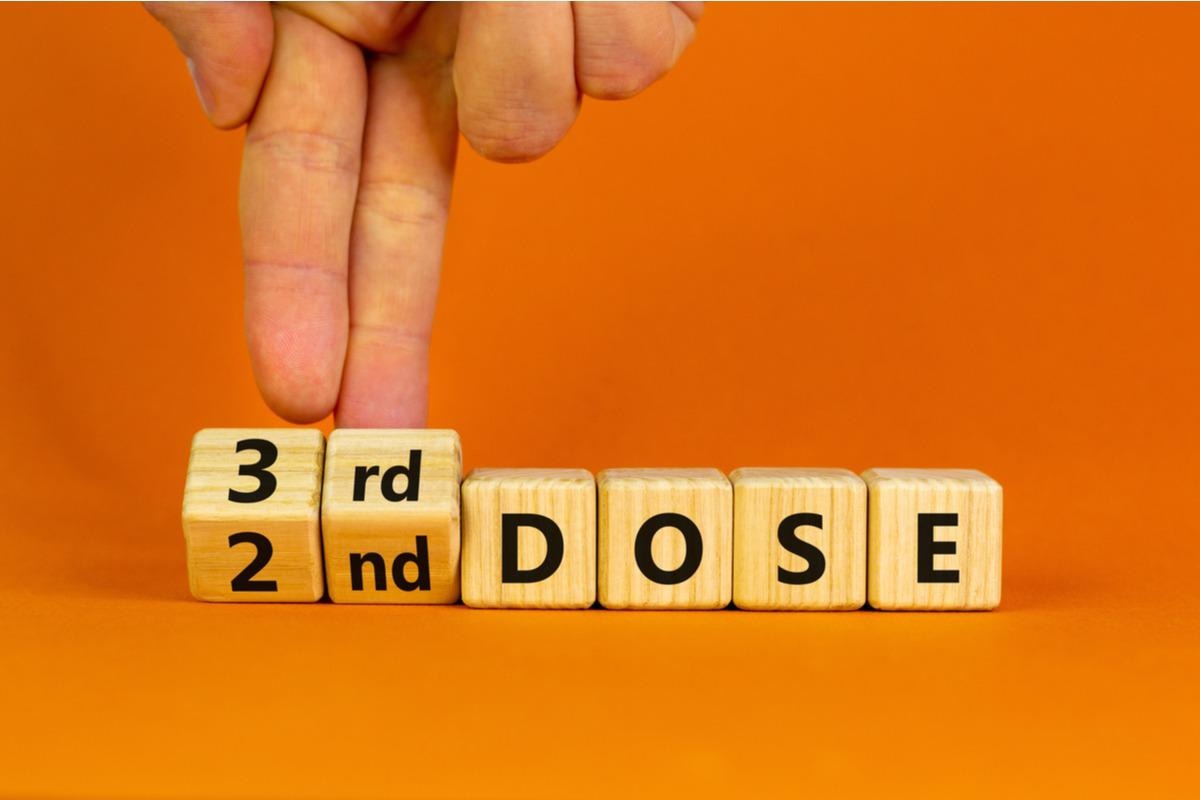In a recent study posted to the medRxiv* preprint server, researchers compared the effectiveness of the coronavirus disease 2019 (COVID-19) booster vaccine to that of the primary vaccine series.

Background
To date, over five million confirmed cases of severe acute respiratory syndrome coronavirus 2 (SARS-CoV-2) cases, including 6.2 million deaths, have been reported globally. COVID-19 vaccines have played a critical role in curbing COVID-19 transmission; however, the waning efficacy of these vaccines has led to the administration of booster vaccines for better protection against infection and disease severity.
About the study
The researchers of the present study estimated the relative vaccine effectiveness (VE) of COVID-19 messenger ribonucleic acid (mRNA) booster vaccines as compared to the primary two-dose vaccine series.
The study included vaccinated participants from an ongoing longitudinal study called the prospective assessment of COVID-19 in a community (PACC) between 20 December 2021 and 24 February 2022. Participants who were aged 12 years and above and were eligible to receive a booster dose, that is, five months had passed since the participant had completed their mRNA primary vaccine series. Almost 96% of the samples sequenced during the follow-up period were infected with the SARS-CoV-2 Omicron variant.
The team estimated the hazard ratios of SARS-CoV-2 infections in individuals vaccinated with the primary series in comparison to those who had received their booster vaccine dose. Individuals belonging to the primary vaccine series cohort were vaccinated either after 20 December 2021 or five months or more after receipt of the second dose, whichever was later, and before the administration of the third dose or the end of the study, whichever was earlier. Individuals belonging to the booster vaccinated cohort had received their vaccine after 20 December 2021 or 14 days or more after the administration of the third dose, whichever occurred later.
The team conducted sensitivity analyses to evaluate the VE of all participants except those reporting an immunocompromised state or those who were previously infected with SARS-CoV-2 prior to 20 December 2021. Also, a history of SARS-CoV-2 infection was defined as a positive SARS-CoV-2 test result before 20 December 2021 or self-reported during study enrolment.
Results
The study results showed that 884 individuals participated in the study. These participants were aged between 12 to 90 years, while 62% of them were female and 42% had one or more chronic health conditions. Almost 26% of the participants had completed their primary vaccine dose while 74% of the participants had received a booster vaccine dose by the end of the follow-up period. Notably, the median time between the completion of the primary series and the beginning of the follow-up period was 233 and 275 days for unboosted and boosted participants, respectively. Moreover, the median time from the receipt of the booster vaccine to the beginning of the follow-up period was 33 days for participants who had received their booster dose.
Among individuals who had completed the primary series but had not received the booster dose, 74% had received two doses of the BNT162b2 vaccine, 26% received two doses of the mRNA-1273 vaccine, and none were administered with mixed products. Among boosted participants, a total of 62% were vaccinated with two doses of BNT162b2, 38% with two doses of the mRNA-1273, and 0.2% with mixed products during their primary vaccine series. Approximately 65% and 35% of the booster doses were BNT162b2 and mRNA-1273, respectively.
Out of 9.3% of the SARS-CoV-2 infections identified, 46 were reported after the primary dose and 36 after the receipt of the booster dose. This correlated to the incidence of SARS-CoV-2 at 9.6/10,000 person-days among booster dose vaccinees and 34.6/10,000 person-days among primary series vaccinees. The study also estimated the relative VE as 66% for boosted individuals as compared to those vaccinated with only the primary series.
SARS-CoV-2 infections prior to 20 December 2021 were reported by 23% of the primary series vaccinees and 18% of the boosted individuals. Furthermore, reinfection was observed in only one primary series vaccinee among the 172 participants who reported a previous infection.
Overall, the study findings showed that vaccine effectiveness against SARS-CoV-2 was short-lived and was impacted by waning immune response against infection. The researchers believe that routine SARS-CoV-2 vaccinations are necessary to combat the COVID-19 pandemic.
*Important notice
medRxiv publishes preliminary scientific reports that are not peer-reviewed and, therefore, should not be regarded as conclusive, guide clinical practice/health-related behavior, or treated as established information.
- Joshua G. Petrie, Jennifer P. King, David L. McClure, Melissa A. Rolfes, Jennifer K. Meece, Edward A. Belongia, Huong Q. McLean. (2022). Effectiveness of COVID-19 mRNA vaccine booster dose relative to primary series during a period of Omicron circulation. medRxiv. doi: https://doi.org/10.1101/2022.04.15.22273915 https://www.medrxiv.org/content/10.1101/2022.04.15.22273915v1
Posted in: Medical Science News | Medical Research News | Miscellaneous News | Disease/Infection News
Tags: Chronic, Coronavirus, Coronavirus Disease COVID-19, covid-19, Efficacy, Immune Response, Omicron, Pandemic, Respiratory, Ribonucleic Acid, SARS, SARS-CoV-2, Severe Acute Respiratory, Severe Acute Respiratory Syndrome, Syndrome, Vaccine

Written by
Bhavana Kunkalikar
Bhavana Kunkalikar is a medical writer based in Goa, India. Her academic background is in Pharmaceutical sciences and she holds a Bachelor's degree in Pharmacy. Her educational background allowed her to foster an interest in anatomical and physiological sciences. Her college project work based on ‘The manifestations and causes of sickle cell anemia’ formed the stepping stone to a life-long fascination with human pathophysiology.
Source: Read Full Article



